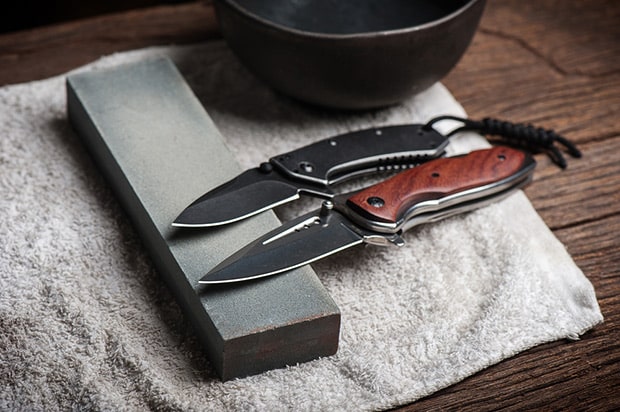How to Sharpen a Pocket Knife With a Knife Sharpener
The use of a knife sharpener is not limited to just a few knives. In fact, you can use one to sharpen any type of pocket knife. This means that you can sharpen your knife just about anywhere, whether you are camping, traveling, or even at home.
Cleaning
Whether you’re trying to keep your knife sharp or want to restore it to its original glory, you need to learn how to clean a pocket knife. There are different approaches to cleaning a pocket knife, depending on its type. Some knives need professional attention while others can be cleaned at home. But regardless of the method you choose, you need to make sure to rinse your knife thoroughly.
The most obvious way to clean a pocket knife is to remove the debris that’s clogging your blade and its locking mechanism. This includes lint, sweat, and other sticky materials. If these aren’t cleaned off, they can corrode the metal parts of your pocket knife.
The best technique for cleaning your pocket knife is to use soap and water. You can also use compressed air to dislodge stubborn particles.
Maintaining a constant angle
When sharpening a pocket knife, you need to do it at the right angle. There are several techniques and tips that will help you maintain the correct angle.
The proper angle should be about 10 degrees to 15 degrees for a standard pocket knife. This is a good compromise between a shallow angle and a steep one. Using the right angle will ensure that the knife will retain its edge and you won’t waste time trying to hone the wrong part of the bevel.
One of the best ways to ensure you are maintaining the proper angle is to use a sharpening guide. You can find these guides for as little as $10. They are designed to attach to the blade of your knife and provide a way to hold the edge at the correct angle.
Choosing a whetstone vs a ceramic stone
Whetstones are stones used for sharpening blades. They come in many sizes and types. The type of stone you choose depends on what you are sharpening. There are Waterstones, ceramic stones, and diamond stones. Some people prefer to use a combination stone, which has coarse grit on one side, and fine grit on the other.
Waterstones, also known as Japanese sharpening stones, are used for sharpening knives. They are often natural or synthetic and come in various grit levels. These stones are usually imported from Japan. However, they can be bought from many other countries.
Diamond whetstones are a more expensive option. While they are good for rough and chipped edges, they can be difficult to clean up. Soak the stone in a solution of water and honing oil before sharpening.
Using an anti-friction agent
If you own a pocket knife, then you probably know that it is important to keep it sharp. Sharpened knives are much easier to use. They make for a very convenient and practical tool. However, you need to take care when using a knife sharpener. You could end up with a serious injury. To avoid this, follow these steps:
Using an anti-friction agent is an important step in sharpening a pocket knife. This will help prevent debris from getting on the stone. While some people swear by spit or water, mineral oil is usually a more effective choice.
Using a sharpening stone is also a good idea. Unlike a file, you can easily clean your sharpening stone after each use. These stones can be made from a wide variety of materials, including brick, concrete, and even unglazed porcelain.
Forming a burr
If you want your knife to be sharp and functional, then it needs to be properly sharpened. To achieve this, you need to establish a burr. This burr is a small lip of steel that forms on the cutting edge of your blade. It tells you where to place the blade during the sharpening process. You can easily check whether or not you have established a burr by using your fingernail.
Forming a burr is the most important part of a blade’s sharpening. Having a burr allows you to check whether or not you’ve done a good job. The main thing to keep in mind when forming a burr is that it should be fairly large. A smaller burr is not as effective at sharpening your knife.


